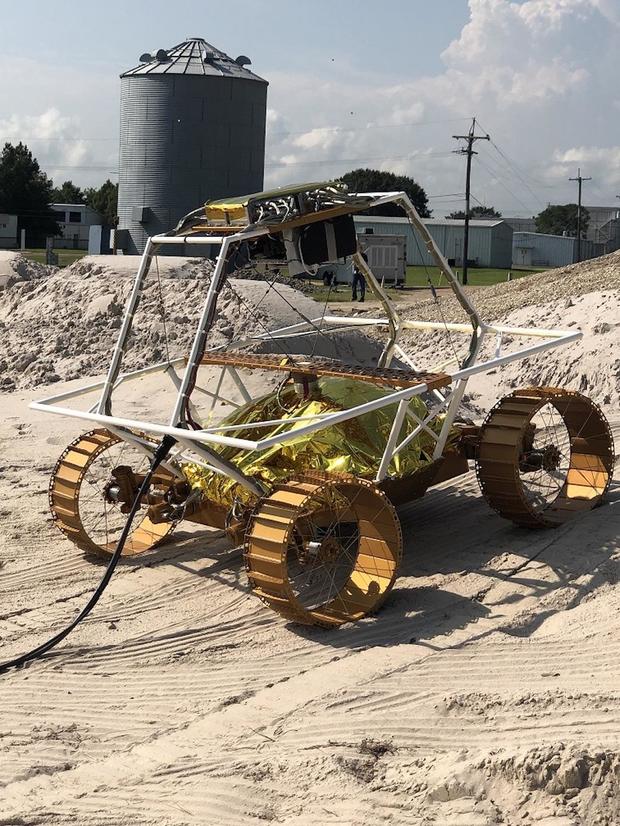NASA's new lunar rover will search for water on the moon
NASA wants to explore the moon's mysterious South Pole, and it's sending a new rover to do it. The VIPER will land in 2022 in search of water on the lunar surface.
The Volatiles Investigating Polar Exploration Rover — or VIPER — will take samples of moon soil, looking for evidence of water-ice, NASA announced Friday. Starting in December 2022, the mobile robot will spend 100 days collecting data and sampling the water that is crucially needed for future astronauts.
NASA said the rover is about the size of a golf cart, equipped with four scientific instruments to sample a range of soil environments. Researchers plan to use the data collected to create the first water resource maps of the moon.
"The key to living on the moon is water – the same as here on Earth," said Daniel Andrews, the project manager of the VIPER mission. "Since the confirmation of lunar water-ice ten years ago, the question now is if the moon could really contain the amount of resources we need to live off-world. This rover will help us answer the many questions we have about where the water is, and how much there is for us to use."
The moon potentially has millions of tons of water-ice, NASA said, which could be provide hydrogen for rocket fuel or oxygen for breathing. The goal is to find enough to sustain a human presence on the lunar surface.
VIPER is part of NASA's Artemis program, which aims to land the first woman and next man on the moon by 2024. The agency plans to eventually build a permanent moon base as a stepping stone to Mars exploration.
NASA scientists believe the lunar poles could be promising spots to find water-ice, since it can collect there without being melted by sunlight. The space agency directly detected its presence in 2009, when it crashed a rocket into a crater near the South Pole. Now, humans just need to figure out how to access it.
If VIPER detects a "wet" area, it will deploy a drill, The Regolith and Ice Drill for Exploring New Terrain, or TRIDENT, to dig up soil. That soil will then be analyzed by two other instruments to search for resources, including water.
"It's incredibly exciting to have a rover going to the new and unique environment of the South Pole to discover where exactly we can harvest that water," said Anthony Colaprete, VIPER's project scientist. "VIPER will tell us which locations have the highest concentrations and how deep below the surface to go to get access to water."





